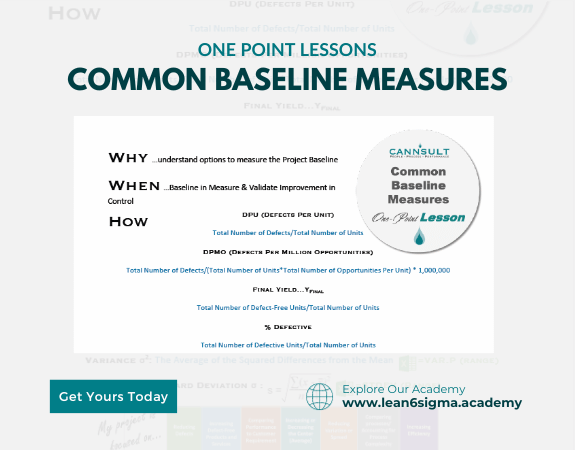Common Baseline Measures
Consistent measures
Early detection
Measure performance
Compare performance
Alignment
Common Baseline Measures provide a consistent reference point for assessing project progress and performance.
Common baseline measures are standard metrics or indicators used to establish a uniform reference point for evaluating project or process performance. By using these measures, teams and stakeholders can objectively track progress, identify deviations, and make informed decisions to ensure successful outcomes.
Importance:
Consistency: Common baseline measures offer a consistent yardstick for measuring success across projects and teams.
Comparison: They enable easy comparison of performance between different projects or time periods.
Alignment: Baseline measures help align project goals with organizational objectives.
Early Detection: Deviations from baseline measures can be spotted early, allowing timely corrective actions.
Examples of Common Baseline Measures:
Schedule Performance Index (SPI): Compares actual progress to planned progress on the project schedule. SPI > 1 indicates ahead of schedule, SPI < 1 indicates behind schedule.
Cost Performance Index (CPI): Compares actual costs to planned costs. CPI > 1 indicates under budget, CPI < 1 indicates over budget.
Earned Value (EV): Measures the value of work actually performed compared to the planned value of the work.
Defect Density: Measures the number of defects per unit of work or product.
Customer Satisfaction Score: Rates customer satisfaction with the delivered product or service.
Steps:
Select Appropriate Measures: Choose baseline measures relevant to your project's objectives and critical success factors.
Establish Baseline: Set initial values for the chosen measures at the project's start. This becomes the reference point for comparison.
Regular Monitoring: Continuously track and update the baseline measures throughout the project's lifecycle.
Analyze Deviations: Compare actual values to the baseline. Identify any deviations and analyze their causes.
Take Corrective Actions: If deviations occur, take timely corrective actions to bring the project back on track.
Benefits:
Enhanced transparency
Objective performance evaluation
Timely decision-making
Improved project predictability
Key Takeaway:
Common baseline measures provide a standardized way to gauge project or process performance. They help teams and stakeholders assess progress, make informed decisions, and achieve successful outcomes by identifying and addressing deviations from the established baseline.

2 Reviews

6 months ago
Highly informative one-point lesson, a quick and valuable learning resource.

6 months ago
Very informative and easy to use.
Riaan is a dynamic leader, coach, facilitator, Lean Six Sigma Master Black Belt with over 20 years of hands-on experience driving business results. Riaan is highly skilled and has worked across diverse industries internationally. With a degree in Chemical Engineering, Riaan started in the major breweries and bakeries in South Africa and was so dedicated to his work that he was often known to take his work home with him.
